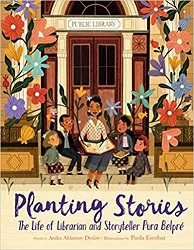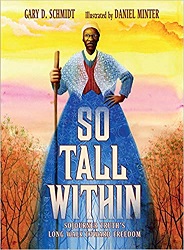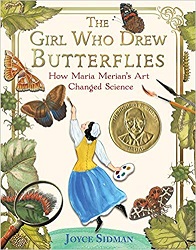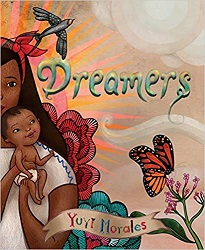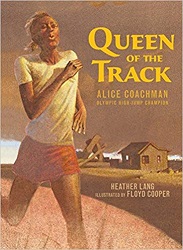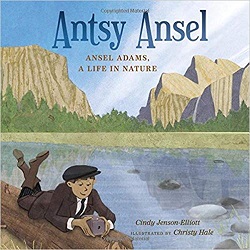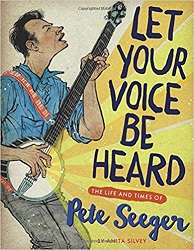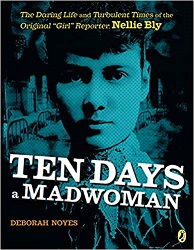Review of Becoming, by Michelle Obama
by Michelle Obama
read by the author
Review written March 22, 2019, from a library audiobook plus my own print copy preordered via Amazon.com
Random House Audio, 2018. 19 hours on 16 CDs.
Starred Review
I got to hear Michelle Obama speak about this book last June at ALA Annual Conference and got excited enough to preorder the book from Amazon.com. But since it came when my Newbery reading was heating up, I decided to listen to the audiobook from the library. However, I had to stop in the middle before my trip to Seattle to choose the Newbery winner, and there was a long wait to get the audiobook again. I ended up reading part of the book in print, then listening to that part again. She is a slow and deliberate reader, so the book is extra long in audio format. But I like her so much, I was happy to hear her voice, and it was worth taking the time to listen.
As for the book – I loved every bit of it. This will be no surprise, since I already love the Obamas. Listening to the book now, with such a contrast between them and the current occupant of the White House – it makes you sad. Yet it’s good to remember that past presidents were there to serve the country. I believe it can happen again.
Part of what I loved about this book was that Michelle Obama was born the same year I was. And both of us skipped a year of school, so she graduated from high school the same year I did, too. Our lives were not terribly similar, but there are some little details about life in the 60s and 70s that felt so familiar to me. I also think that our personalities are quite similar – detail-oriented and trying to control things and achieving in school for starters. So I enjoyed reading about her growing-up years almost the most of all. Felt like I had a sister in spirit. I already knew a lot about her political years – but hearing about her childhood was extra charming to me.
And she’s a good writer. The story of her romance is told as effectively as a good romance novel. I had to turn in the audiobook when I’d gotten to where they’d just had their first kiss and was super frustrated to have to wait to hear more. Of course, it helps that I already have a crush on her husband!
Yes, this book paints her husband’s politics in a good light, so those who already despise the Obamas probably won’t like it. But if you can tolerate that, this book presents a window on American life. Michelle Obama presents herself as an ordinary person who was blessed with some fantastic opportunities, and she wants to pass on some of that good fortune to others and help young people from modest backgrounds aspire to much more.
I liked hearing about all the young people the Obamas brought to the White House with several different programs, to encourage them and give them a boost. Truly they were there to serve.
In her Epilogue, Michelle shows that she’s still living with optimism, one of her most important values. Even though this book made me discouraged for how things have gone since the Obamas left office, her optimism is contagious. America will continue to make progress. After reading this book, I can believe it again.
Here are her final thoughts in this book:
I’m an ordinary person who found herself on an extraordinary journey. In sharing my story, I hope to help create space for other stories and other voices, to widen the pathway for who belongs and why. I’ve been lucky enough to get to walk into stone castles, urban classrooms, and Iowa kitchens, just trying to be myself, just trying to connect. For every door that’s been opened to me, I’ve tried to open my door to others. And here is what I have to say, finally: Let’s invite one another in. Maybe then we can begin to fear less, to make fewer wrong assumptions, to let go of the biases and stereotypes that unnecessarily divide us. Maybe we can better embrace the ways we are the same. It’s not about being perfect. It’s not about where you get yourself in the end. There’s power in allowing yourself to be known and heard, in owning your unique story, in using your authentic voice. And there’s grace in being willing to know and hear others. This, for me, is how we become.
becomingmichelleobama.com
crownpublishing.com
penguinrandomhouseaudio.com
Find this review on Sonderbooks at: www.sonderbooks.com/Nonfiction/becoming.html
Disclosure: I am an Amazon Affiliate, and will earn a small percentage if you order a book on Amazon after clicking through from my site.
Disclaimer: I am a professional librarian, but I maintain my website and blogs on my own time. The views expressed are solely my own, and in no way represent the official views of my employer or of any committee or group of which I am part.
What did you think of this book?

